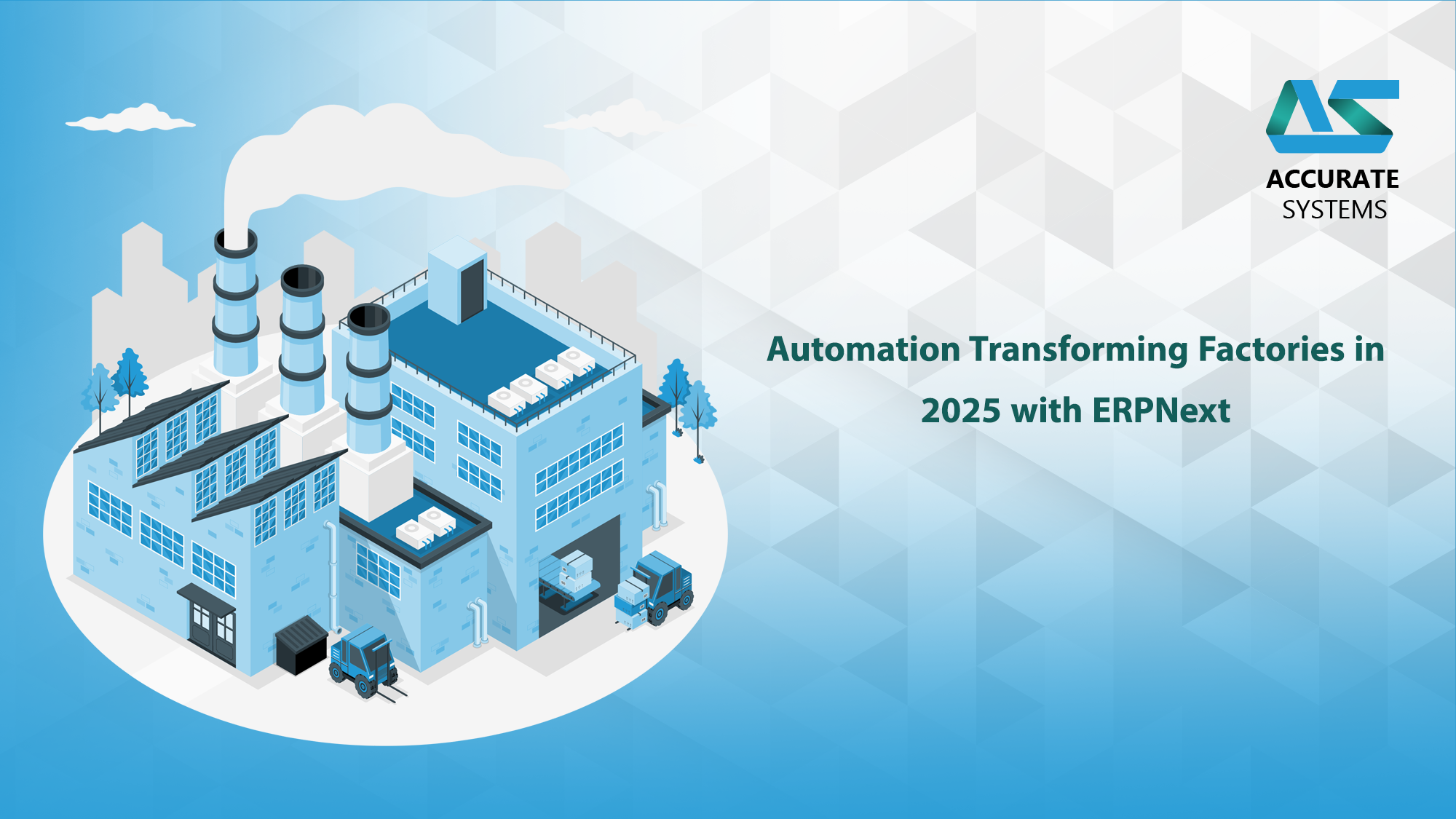The manufacturing industry is undergoing a significant transformation in 2025, with automation and smart technologies reshaping how factories operate. The integration of Enterprise Resource Planning (ERP) systems, particularly ERPNext, is revolutionizing efficiency, productivity, and decision-making in Industry 4.0.
This article explores how automation, AI, IoT, and ERPNext are driving the next wave of factory evolution and enabling manufacturers to stay competitive in a rapidly changing industrial landscape.
The Rise of Smart Factories in 2025
The concept of smart factories is gaining traction as manufacturers leverage cutting-edge automation technologies. Key trends defining factory automation in 2025 include:
- Artificial Intelligence (AI) & Machine Learning (ML): AI-driven analytics optimize production processes and predictive maintenance.
- Internet of Things (IoT): Connected sensors provide real-time data for better decision-making.
- Robotic Process Automation (RPA): Robotics handle repetitive tasks, reducing labor costs and human errors.
- Cloud-Based ERP Solutions: ERPNext integrates various manufacturing functions into a centralized system for seamless management.
- Data-Driven Manufacturing: Big data analytics enhance production efficiency and minimize downtime.
These innovations collectively drive greater efficiency, lower operational costs, and higher production quality.
How ERPNext Powers Automation in Factories
ERPNext is an open-source ERP system designed to streamline manufacturing operations through automation. Key ways ERPNext transforms factory automation in 2025 include:
1. Smart Inventory Management
- Automated stock tracking using IoT sensors.
- Real-time inventory monitoring to prevent overstocking or shortages.
- AI-based demand forecasting for precise procurement planning.
2. AI-Powered Production Planning
- Dynamic scheduling optimizes production lines.
- Automated work orders reduce manual intervention.
- Machine learning algorithms improve efficiency and reduce waste.
3. Predictive Maintenance & IoT Integration
- Sensor-based monitoring predicts machine failures before they occur.
- Automated alerts and maintenance schedules reduce downtime.
- Real-time diagnostics improve asset longevity and performance.
4. Seamless Supply Chain Automation
- Automated procurement processes reduce supplier delays.
- AI-driven logistics management optimizes shipping routes and delivery schedules.
- Blockchain-enabled transparency ensures secure transactions and traceability.
5. Workforce Efficiency & Automation
- Automated HR & Payroll systems streamline workforce management.
- AI-driven training programs upskill employees for Industry 4.0.
- Smart shift scheduling maximizes labor efficiency and reduces downtime.
By integrating ERPNext with these advanced automation tools, manufacturers can achieve unmatched scalability and agility.
Benefits of Automation in Factories Using ERPNext
The adoption of automation and ERPNext in factories of 2025 delivers significant benefits, including:
✅ Increased Productivity: AI-driven workflows streamline operations.
✅ Cost Reduction: Automation lowers labor and maintenance costs.
✅ Higher Accuracy: Eliminates human errors in production and inventory management.
✅ Real-Time Data Insights: Improved decision-making with live analytics.
✅ Sustainability & Energy Efficiency: IoT-powered systems optimize resource consumption.
✅ Scalability & Flexibility: Adapts to changing production demands effortlessly.
With these advantages, ERPNext-powered automation is positioning manufacturers at the forefront of Industry 4.0.
Use Cases: ERPNext in Smart Factories
1. Automotive Manufacturing
Leading car manufacturers leverage ERPNext and IoT to:
- Automate inventory replenishment for just-in-time production.
- Use AI-driven robots for assembly line operations.
- Enhance supply chain coordination with real-time tracking.
2. Electronics & Consumer Goods
Electronics manufacturers utilize ERPNext for:
- Predictive maintenance of machines to reduce downtime.
- AI-powered quality control to identify defects early.
- Optimized warehouse automation to improve order fulfillment speed.
3. Pharmaceutical & Healthcare Factories
Pharmaceutical firms automate compliance and production using ERPNext:
- Track and trace mechanisms ensure regulatory compliance.
- Automated production planning prevents bottlenecks.
- Real-time batch monitoring enhances product safety and quality.
The Future of Factory Automation with ERPNext
As technology advances, the role of automation and ERPNext in factories will continue to expand. Future trends include:
- AI-powered self-learning systems that optimize factory processes autonomously.
- 5G-enabled smart factories for real-time machine-to-machine communication.
- Decentralized manufacturing networks leveraging blockchain for security and transparency.
- Green manufacturing solutions using automation to minimize waste and energy consumption.
Manufacturers who adopt ERPNext and automation will lead the industrial revolution in 2025 and beyond.
Conclusion
The automation revolution is reshaping factories in 2025, with ERPNext playing a central role in streamlining processes, enhancing efficiency, and empowering data-driven decision-making. By leveraging AI, IoT, and automation, manufacturers can achieve unparalleled productivity, cost savings, and competitiveness in the rapidly evolving industrial landscape.
🚀 Are you ready to embrace the future of smart manufacturing? Implement ERPNext today and unlock new possibilities for your factory!


